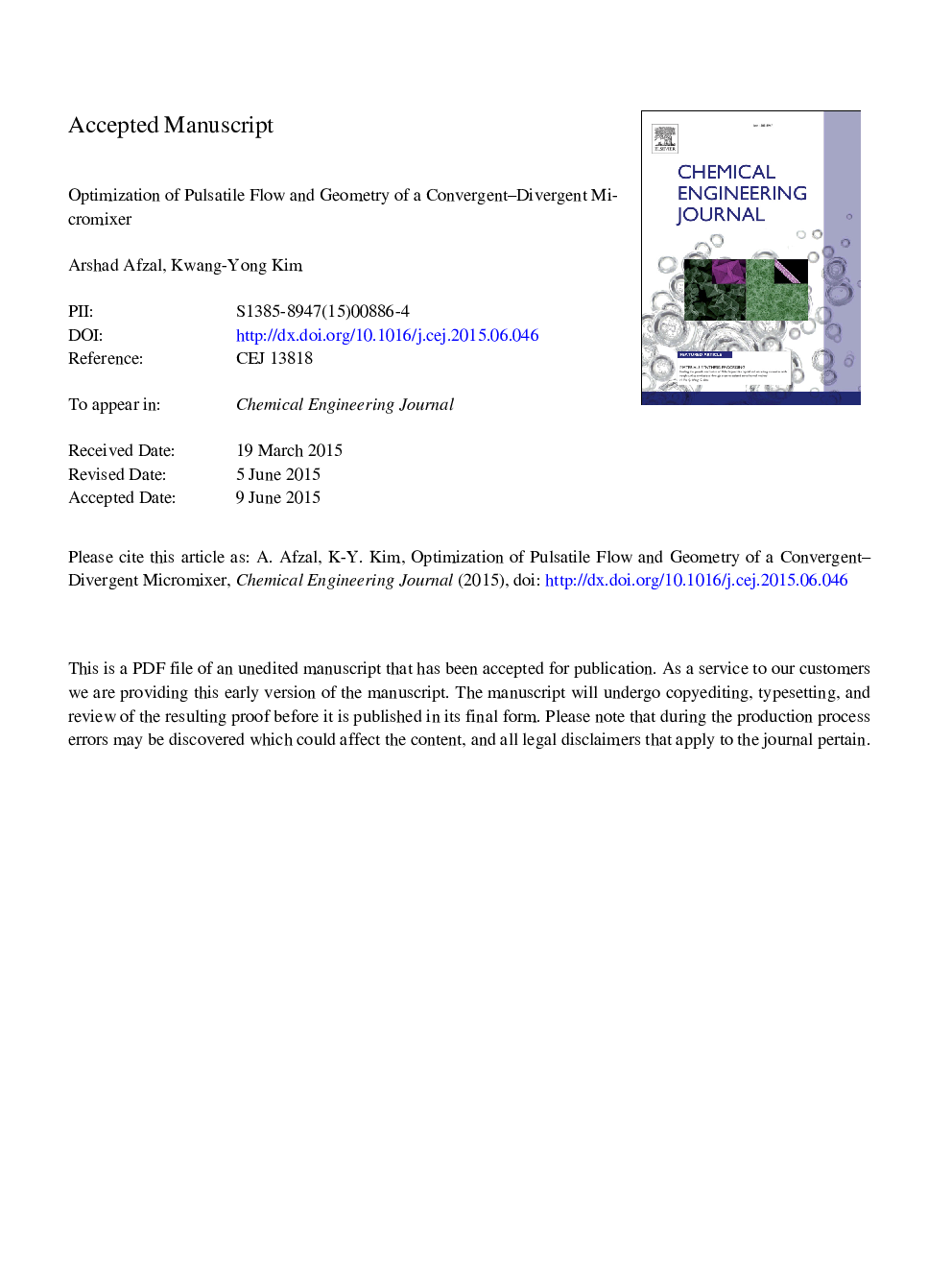| Article ID | Journal | Published Year | Pages | File Type |
|---|---|---|---|---|
| 6584431 | Chemical Engineering Journal | 2015 | 45 Pages |
Abstract
The geometry and operating conditions of a micromixer with convergent-divergent sinusoidal walls under pulsatile flow were optimized in this work to maximize the mixing performance. Flow and mixing analyses were performed using the three-dimensional unsteady Navier-Stokes equations with a convection-diffusion model for the species concentration. A time-averaged mixing index was used to evaluate the mixing performance of the micromixer with a pulsatile flow. The overall mixing index was selected as the objective function, and both geometric and flow variables were used as the design variables. The ratio of the amplitude to the wavelength of the sinusoidal walls and the throat width to depth of the convergent-divergent channel were selected as the geometric variables, and the Strouhal number and the ratio of the pulsing amplitude to the steady flow velocity of the pulsatile flow were selected as the flow variables. Three different surrogate models were tested for the optimization to approximate the objective function at a Reynolds number of 0.5. The results indicate that the Kriging model predicts the best optimum design with a mixing index of 92.35% at the outlet of the micromixer.
Related Topics
Physical Sciences and Engineering
Chemical Engineering
Chemical Engineering (General)
Authors
Arshad Afzal, Kwang-Yong Kim,
